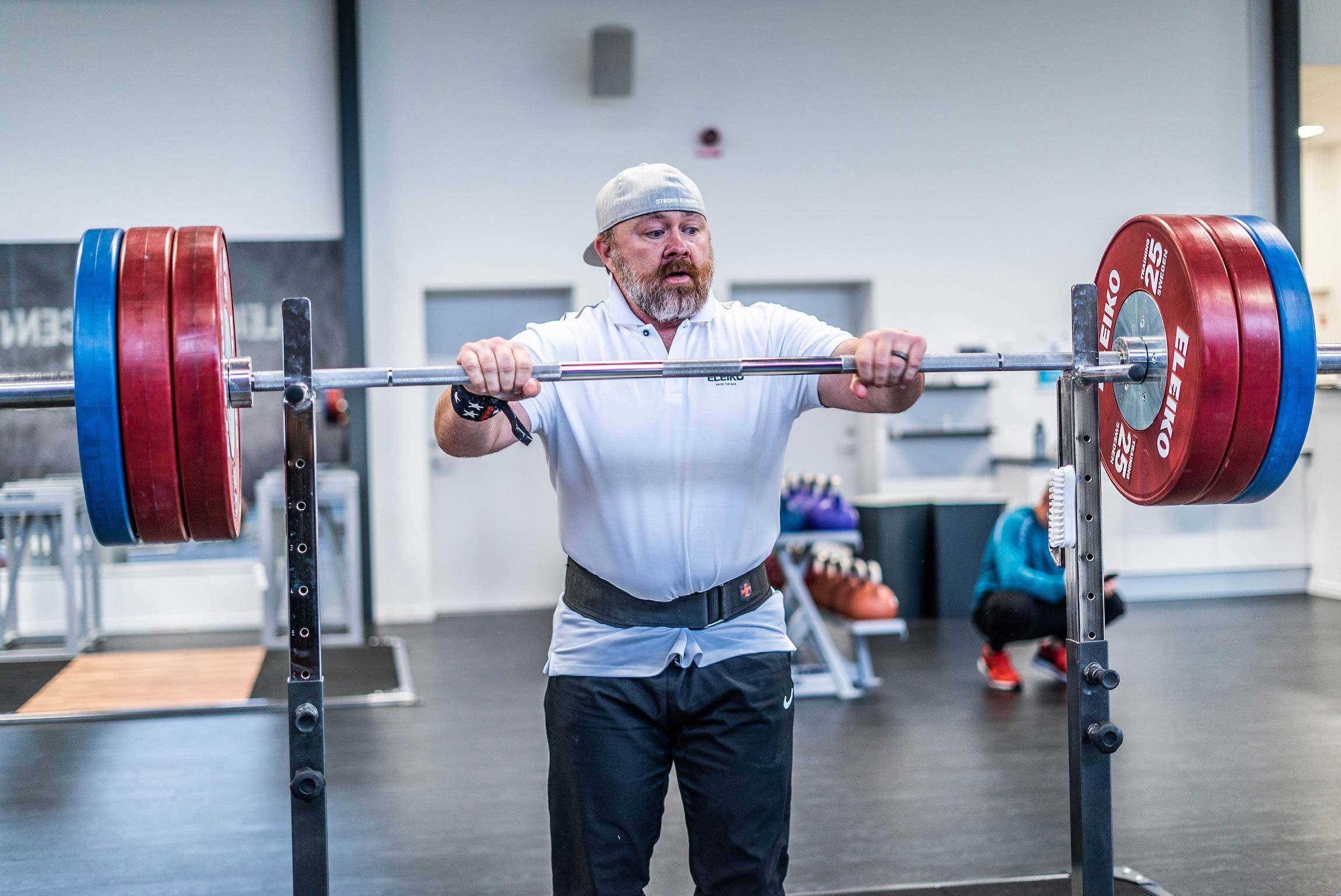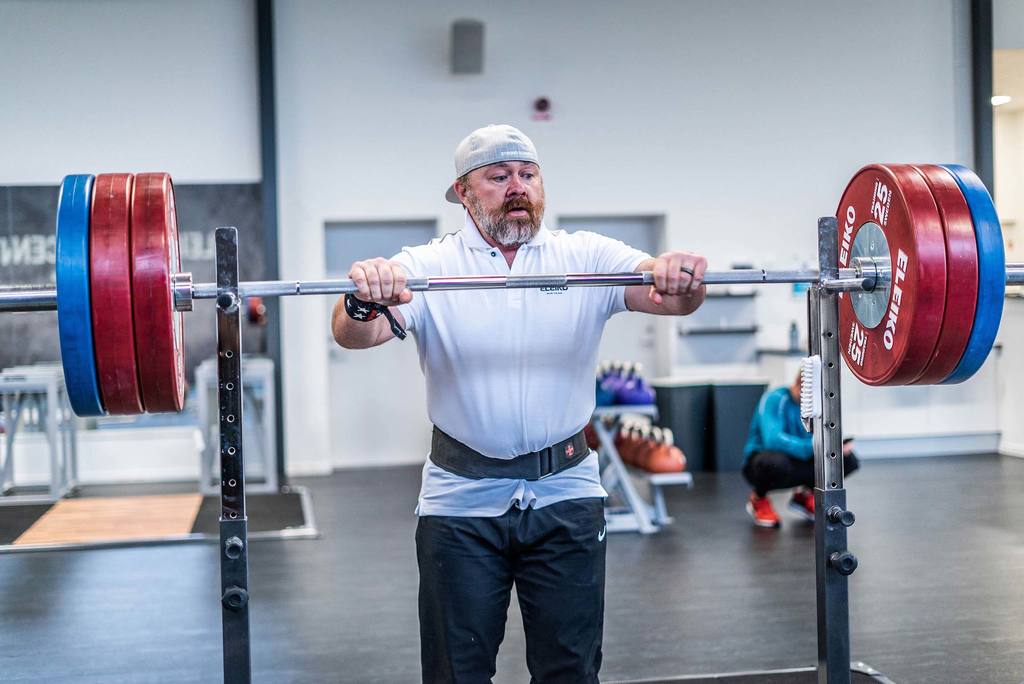Coach Joe Kenn recently made a post for Dynamic Fitness and Strength regarding testing progress with 1RM (one repetition maximums) versus multi-repetition maximum (3RMs or 5RMs).
He made a great point I totally agree with. Coaches use multi-repetition maximums, and they defend their choice by saying it is safer. I have never understood that train of thought. Let me tell you why.
Reason #1
It’s really not much lighter. Most people can triple between 90% and 93% of their 1RM. Suppose an athlete has a 1RM of 200 kilograms (or 440 pounds). Are you telling me that 182 kilograms (400 pounds) for 3 reps is safer? (That’s 91%.) I can’t understand that reasoning.
[thrive_leads id=’8207′]
Reason #2
Total load is much higher. Here’s the point that Coach Joe Kenn made:
“You will see that the multiple rep max places more opportunities via volume to put the athlete in harms way as well as the increase in tonnage.”
Example 1: Squat 1RM – Goal 500 Pounds
Prep:
- 8 reps – 30% of Attempt 1
- 5 reps – 50% of Attempt 1
- 3 reps – 65% of Attempt 1
- 2 reps – 80% of Attempt 1
- 1 rep – 90% of Attempt 1
Attempt 1:
- 90% of 1RM = 450 pounds x 1
Attempt 2:
- 95% of 1RM = 475 pounds x 1
Attempt 3:
- 100% of 1RM = 500 pounds x 1
Injury Opportunities = 3
Total Load = 1425 pounds
Example 2: Squat 5RM – Goal 400 Pounds
Same Prep Work
Attempt 1:
- 90% of 1RM = 360 pounds x 5
Attempt 2:
- 95% of 5RM = 380 pounds x 5
Attempt 3:
- 100% of 5RM = 400 pounds x 5
Injury Opportunities = 15
Total Load = 5700 pounds

Reason #3
The last rep gets dodgy. We all know when we are going for that 3RM or 5RM, those last few repetitions are shaky at best. Coaches need to understans it’s not really the load that’s the risk. The risk lies in the bar motor patterns – especially at a collegiate level or strength and conditioning level.
Dr. Stuart McGill will tell you there is a biological tipping point. That means that there will come a time for strength athletes as they’re handling massive weights when will eventually reach a tipping point even with perfect form. However we are talking about athletes who aren’t professional strength athletes. They are nowhere near a biological tipping point. Therefore, the biggest risk lies in the quality of movement pattern.
A Better Way
However there is one way to monitor progress without considering load. If you want to minimize risk of injury while still monitoring progress with your athletes, I strongly recommend using velocity-based training. You can choose a percentage of maximum that you consider being safe for one repetition. I like using 88% because it’s still perceived as a heavy weight by the central nervous system.
On week one, establish a velocity. Let’s you squat 88% of your 1RM at 0.5 m/s at the start of a cycle. At the end of a cycle, if you are squatting that same weight at 0.65 m/s you have made a great improvement – and you didn’t have to add once ounce to the bar. If strength coaches want to be safe with their testing, this would be the safest way that I can think of.
[thrive_leads id=’9474′]
However, velocity doesn’t tell the entire tale. I prefer testing the 1RM with a 9.5 RPE or a 0.3 m/s velocity to get an idea of fiber recruitment and hypertrophy in all three major joints (hips, knees, and back). I would use velocity for in-season training as a way of keeping the focus on speed, efficient movement patterns, and mainly on their sport. Offseason though, I am going to focus the testing on a 1RM done at a 9.5 RPE or 0.3 m/s.
In case you don’t know, a 9.5 rate of perceived exertion is a weight that you couldn’t do any more repetitions with, but you could possibly add more weight. I would call this stopping one set before failure is even a possibility. Some coaches who are a bit more cautious might stop at 9 RPE, which is a weight that you could have done for one more repetition. Pairing RPE with velocity is the safest and the most objective way to monitor progress carefully.
I hope this article gives you some new ideas regarding testing your athletes. There isn’t a perfect way to test anyone where there is zero risk. People have gotten hurt picking up a basket of clothes. It probably wasn’t the basket that hurt them, but rather their day-to-day movement patterns that messed them up. With athletes, they might get hurt with 40% of a 1RM if they have somehow compromised their bodies playing their sport without knowing. An injury like that was going to surface regardless. All we can do as strength coaches is to be as safe as possible with our protocols, teach exact and deliberate movement patterns, and constantly observe our athletes performing those movements.

The only time I test is twice a year. And, they happen on stage. Otherwise as an athlete I just did my reps and if the weight went up that was test enough for me. Always got stronger, still getting stronger. Kept reps to a minimum to 3, but mostly did 5. Once I hit 5×5, on a Nickle on both sides and try to hit 5×5 again.
I try to keep it simple.
Chris @ SDL Pools